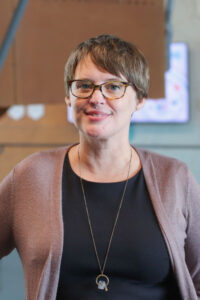Supporting STEM Teachers with Actionable Content-Based Feedback
By Dr. Mary Lynne Derrington & Dr. Alyson Lavigne

Please Note: This is Part 2 of a four-part series on actionable feedback. Stay tuned for the next posts that will focus on Leadership Content Knowledge (LCK) and teacher feedback in the areas of STEM, Literacy, and Early Childhood Education.
Missed the beginning of the series? Click here to read Part 1
on making teacher feedback count!
For school leaders, providing teachers with feedback in unfamiliar subject areas can be a challenge. At the same time, we know that teachers highly value feedback on their teaching content area as well as general pedagogical practices. When school leaders deepen their understanding of different subjects, it can prove a powerful lever to giving teachers the feedback they deserve and desire. Today, we’ll discuss ways to support teachers in the STEM (Science, Technology, Engineering and Math) area.
Imagine you are scheduled to observe a STEM lesson, an area where you might not feel confident. What might be some ways to prepare for this observation? Sarah Quebec Fuentes, Jo Beth Jimerson, and Mark Bloom recommend post-holing. In the context of building, this refers to digging holes deep enough to anchor fenceposts. As it pertains to your work, post-holing means engaging in an in-depth, but targeted exploration of the content area.
Another strategy is joining a STEM instructional coach or specialist for an observation and debrief. A third way to learn is to attend a STEM-focused professional development for teachers. These activities can help you think more deeply about the content and how it is taught.
In addition, you can identify subject-specific best practices to integrate into a pre-observation or post-observation conversation. This might look like adapting a subset of evaluation questions to specifically reflect STEM objectives. For example:
- Poses scenarios or identifies a problem that students can investigate (Bybee, et al., 2006).
- Fosters “an academically safe classroom [that] honors the individual as a mathematician and welcomes him or her into the social ecosystem of math” (Krall, 2018).
- Avoids imprecise language and overgeneralized tips or tricks (e.g., carry, borrow, FOIL) and instead use precise mathematical language grounded in conceptual mathematical understanding (e.g., trade, regroup, distributive property) (Karp et al., 2014, 2015).
- Uses models to communicate complex scientific concepts, emphasizing that models are only approximations of the actual phenomena and are limited simplifications used to explain them (Krajcik & Merritt, 2013).
Let’s imagine a meaningful mathematical talk emerges as an important practice from your post-holing in mathematics. In a pre-observation you might ask the teacher about their plans for creating meaningful mathematical talk in the lesson. During the observation, you can note if those questions appeared and/or when moments of meaningful mathematical talk were taking place. In a post-observation, you might ask teachers to reflect upon the moments they felt meaningful mathematical talk was occurring, and what inputs yielded those outcomes.
This blog entry is part of a four-part series on actionable feedback. Stay tuned for our next two posts that will focus on Leadership Content Knowledge (LCK) on concrete ways to provide feedback to teachers in the areas of, and Early Childhood Education.
If this blog has sparked your interest and you want to learn more, check out our book, Actionable Feedback to PK-12 Teachers. And for other suggestions on supervising teachers in STEM discipline areas with specific pre-observation and post-observation prompts and key practices for observation, see Chapter 8 by Sarah Quebec Fuentes, Jo Beth Jimerson, and Mark A. Bloom.





 Hello! My name is Kiley Compton and I am a fourth-year doctoral student in UT’s
Hello! My name is Kiley Compton and I am a fourth-year doctoral student in UT’s